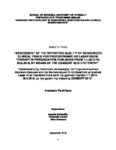| dc.description.abstract | 3D printing (3DP) of polymers using fused filament fabrication (FFF) is not yet massively adopted in industrial environments due to shape accuracy and surface integrity limitations. However, the FFF process combined with laser processing (hybrid manufacturing) or other precision machining processes is under investigation nowadays and is a promising combination for high quality 3DP final parts. This work investigates the effects on the dimensional accuracy and the surface roughness of process parameters, during low power CO2 laser cutting (LC) of thin acrylonitrile butadiene styrene (ABS) plates manufactured with the FFF process. Even though LC is highly flexible and the quality of the machined surfaces is versatile, certain problems are associated with LC, such as the kerf angle formation and the surface texture quality, which need optimization in respect to the LC parameters. The full factorial design methodology is adopted, having four parameters as input, i.e., stand-off distance (SoD), raster deposition angle (RDA), laser speed (LS), and laser power (LP), and kerf geometry characteristics as output, i.e., kerf widths (upper, middle, and down; Wu, Wm, and Wd), kerf angle (KA), and average and max height surface roughness (Ra and Rt). The statistical analysis is used to investigate the relations between the input and the output parameters. Seventy-two independent experiments were utilized. The analysis of variances (ANOVA), the interaction study, and the quadratic regression models (QRM) were adapted to fit the input with the output parameters, optimize the process KA close to 0°, and minimize the Ra close to 0 μm. The optimum parameter values (7.5 mm SoD, zero RDA, 14.4 mm/s LS, and 105 W LP) are validated by seven independent experiments, which show that only the Wu and Ra predicted values are close to the actual values following the ANOVA analysis and the mean average percengtage error (MAPE) index. © 2021, The Author(s), under exclusive licence to Springer-Verlag London Ltd., part of Springer Nature. | en |

